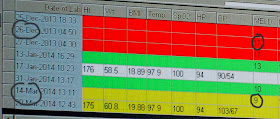
HIV-positive transplant: A deceased donor with HIV donates their healthy liver to an HIV-positive recipient.Split liver transplant: A liver from a deceased donor is divided between two recipients. The MELD (Model for End-stage Liver Disease) score was originally developed to estimate survival of patients with chronic liver disease. INSTRUCTIONS Note: This is the pre-2016 MELD which does not include serum sodium level, as non-US transplant societies are still using the original MELD formula.People with higher MELD scores are usually placed. Antiviral medication follows surgery to ensure a cure. The original MELD score includes three variables: serum bilirubin, serum creatinine, and the International Normalised Ratio (INR). Why is it done A MELD score is used to place people on the national waiting list for a liver transplant. Hepatitis C-positive transplant: A healthy hepatitis C-positive liver is transplanted into a recipient.One of the pitfalls of the MELD score is. Afterward recipients take a daily medication to suppress any infection that might develop. The Model for EndStage Liver Disease (MELD) score is widely used to prioritize patients for liver transplantation. Hepatitis B-positive transplant: The procedure is the same as traditional transplant surgery.Living donor transplant: A portion of a living person’s liver is removed and transplanted into someone whose liver is no longer working properly.The score is based on how urgently you will need a liver transplant within the next three months. Although the median wait time for a liver transplant at Duke is much shorter - 85 days - Duke offers a variety of alternatives to help people get transplanted faster, even if they rank low on the national waitlist. MELD Score The Model for End-Stage Liver Disease (MELD) The Model for End-Stage Liver Disease (MELD) is a numerical scale, ranging from 6 (you are less sick) to 40 (you are gravely sick), used for liver transplant candidates age 12 and older. How Is the MELD Score Calculated To find your MELD score, doctors examine the results of several lab tests.

The higher the score, the more serious the patient’s disease. After someone is added to the national waitlist, the average wait time for a liver transplant in the U.S. MELD scores range from six to 40 and are based on the likelihood of death within a three-month period. Understanding My MELD Score: Questions About Transplant - One of the most common question from patients and their family members that Dr.


 0 kommentar(er)
0 kommentar(er)
